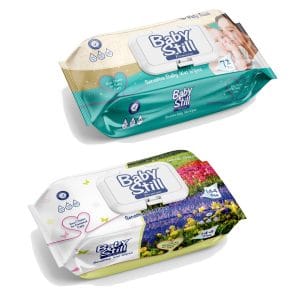How Are Biodegradable Wet Wipes Made?
Wet wipes are a convenient and essential item in everyday life, whether for personal hygiene, cleaning, or even baby care. But have you ever wondered how biodegradable wet wipes are made? With growing awareness about sustainability and environmental impact, biodegradable products are becoming increasingly popular. In this article, we’ll explore how biodegradable wet wipes are produced, what materials are used, and why they’re better for the planet. Let’s dive into the fascinating process!
How Are Biodegradable Wipes Made?
The process of making biodegradable wet wipes is quite similar to the production of regular wet wipes, with one major difference—the materials. Here’s a step-by-step guide to how biodegradable wipes are made:
-
Choosing the Right Fabric: The first step in making biodegradable wet wipes is choosing the right fabric. Unlike traditional wipes, which are often made from synthetic materials like polyester or polypropylene, biodegradable wet wipes are crafted from natural fibers. These can include cotton, bamboo, wood pulp, and plant-based fibers. The fibers are chosen for their ability to break down naturally when exposed to moisture and microorganisms in the environment.
-
Creating the Wipe Material: Once the fibers are selected, they are processed into a soft and absorbent fabric. The fabric is woven or spun into sheets that are then cut into the desired wipe size. These sheets are treated to ensure that they are both strong and flexible, making them easy to use without tearing.
-
Infusing the Wipes with Solution: After the fabric is prepared, the next step is to infuse it with a wetting solution. This solution can contain water, gentle cleansers, and natural ingredients like aloe vera or essential oils for added benefits. The solution is applied evenly across the wipes, ensuring each one is properly soaked for use.
-
Packaging: Finally, the wipes are folded and packaged in a way that keeps them moist until they are ready to be used. Biodegradable wipes are typically sealed in eco-friendly packaging that can also break down easily, such as compostable plastic or cardboard.
The key to making biodegradable wet wipes is ensuring that all components—from the fabric to the solution and the packaging—are eco-friendly and decompose without harming the environment.
What Are Biodegradable Face Wipes Made Of?
Biodegradable face wipes are specifically designed for facial use, which means they need to be both gentle on the skin and effective at removing makeup, dirt, and oils. These wipes are typically made from a combination of natural materials, including:
-
Cotton: A soft, absorbent fiber that is naturally biodegradable.
-
Bamboo: Known for its sustainability, bamboo is fast-growing and can be processed into soft wipes.
-
Wood Pulp: Often sourced from sustainable forests, wood pulp is a popular material in biodegradable wipes.
-
Plant-based fibers: These fibers, such as those from sugarcane or corn, are commonly used to create biodegradable wipes that are both durable and soft.
The solution inside biodegradable face wipes is typically formulated with skin-friendly ingredients like chamomile, lavender, and vitamin E, which nourish and hydrate the skin while cleansing.
Why Are Biodegradable Wipes Better for the Environment?
 Biodegradable wipes offer a more sustainable option compared to conventional wet wipes, which can take hundreds of years to decompose. Here are a few reasons why biodegradable wet wipes are better for the environment:
Biodegradable wipes offer a more sustainable option compared to conventional wet wipes, which can take hundreds of years to decompose. Here are a few reasons why biodegradable wet wipes are better for the environment:
-
Faster Decomposition: Since biodegradable wipes are made from natural fibers, they break down much faster in the environment, reducing the strain on landfills.
-
Reduced Chemical Use: Biodegradable wipes are often free from harsh chemicals that can pollute water sources and harm wildlife.
-
Eco-friendly Packaging: Many biodegradable wipes come in compostable or recyclable packaging, further reducing environmental impact.
By choosing biodegradable wipes, you’re helping to reduce waste and support sustainability in everyday products.
Frequently Asked Questions
How long does it take for biodegradable wet wipes to break down?
Biodegradable wet wipes can take anywhere from a few weeks to a few months to decompose, depending on environmental conditions. However, this is significantly faster than conventional wipes, which can take years.
Are biodegradable wipes safe for sensitive skin?
Yes, biodegradable wipes are often made with natural ingredients and are designed to be gentle on sensitive skin. Always check the product ingredients to ensure it suits your skin type.
Can biodegradable wipes be flushed down the toilet?
While biodegradable wipes break down faster than regular wipes, it is still recommended not to flush them. Even biodegradable materials can cause clogs in plumbing systems.
Do biodegradable wipes have an expiration date?
Yes, biodegradable wipes have a shelf life, usually between 1 to 3 years. Always check the expiration date on the packaging to ensure freshness.
Frequently Asked Questions
-
What makes biodegradable wipes different from regular wet wipes?
-
Are biodegradable wet wipes more expensive?
-
Can biodegradable wipes be composted?
-
How do biodegradable wipes benefit the planet?
In Conclusion
Biodegradable wet wipes are an eco-friendly solution to everyday hygiene needs, offering a natural alternative to traditional synthetic wipes. By choosing biodegradable options, you’re not only making a better choice for your skin but also contributing to a healthier planet. Now that you know how biodegradable wet wipes are made, consider making the switch to these environmentally-friendly options for your daily routine.
Here’s a quick overview of the materials involved in creating biodegradable wipes in a neat table format:
| Material | Source | Benefits |
|---|---|---|
| Cotton | Natural Plant | Soft, absorbent, and biodegradable |
| Bamboo | Fast-Growing Plant | Sustainable, naturally anti-bacterial |
| Wood Pulp | Sustainable Forests | Strong, biodegradable, and cost-effective |
| Plant-Based Fibers | Sugarcane, Corn | Eco-friendly and soft on the skin |

